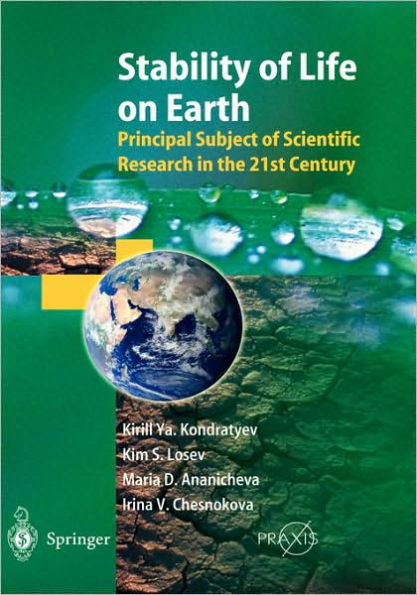Stability of Life on Earth: Principal Subject of Scientific Research in the 21st Century
In Stability of Life on Earth, Professor Kondratyev and his team show that the concept of biotic regulation is of fundamental importance in solving a wide range of environmental and other problems. They put forward a new approach to the solution of old environmental problems. Beginning with a look at the geographic environment and structural units within it, they show that ecosystems represent a set of homogeneous, closely-correlated communities of organisms and their environment. Biologists call such correlated communities ‘biogeocenoses’, and they are similar to the corporate structures in economic systems and interact competitively with each other. On the basis of competitive interaction in the biosphere, self-organisation and management take place. The authors show how human economic activity perturbed balances in natural biogeochemical cycles, eliminating and strongly modifying natural land cover, the 20th Century being the time when human activities ‘collided’ with Nature. They consider scientific bases for the stability and sustainability of life, and demonstrate how the scale and intensity of human-induced destruction of Nature and resultant feedback mechanisms have continuously expanded. They consider the likelihood of increasing numbers of natural disasters as a result of such activities, and propose that sustainable development should become a principal research topic during the 21st Century.
1111332649
Stability of Life on Earth: Principal Subject of Scientific Research in the 21st Century
In Stability of Life on Earth, Professor Kondratyev and his team show that the concept of biotic regulation is of fundamental importance in solving a wide range of environmental and other problems. They put forward a new approach to the solution of old environmental problems. Beginning with a look at the geographic environment and structural units within it, they show that ecosystems represent a set of homogeneous, closely-correlated communities of organisms and their environment. Biologists call such correlated communities ‘biogeocenoses’, and they are similar to the corporate structures in economic systems and interact competitively with each other. On the basis of competitive interaction in the biosphere, self-organisation and management take place. The authors show how human economic activity perturbed balances in natural biogeochemical cycles, eliminating and strongly modifying natural land cover, the 20th Century being the time when human activities ‘collided’ with Nature. They consider scientific bases for the stability and sustainability of life, and demonstrate how the scale and intensity of human-induced destruction of Nature and resultant feedback mechanisms have continuously expanded. They consider the likelihood of increasing numbers of natural disasters as a result of such activities, and propose that sustainable development should become a principal research topic during the 21st Century.
109.0
Out Of Stock
5
1

Stability of Life on Earth: Principal Subject of Scientific Research in the 21st Century
166
Stability of Life on Earth: Principal Subject of Scientific Research in the 21st Century
166
109.0
Out Of Stock

Product Details
| ISBN-13: | 9783540203285 |
|---|---|
| Publisher: | Springer Berlin Heidelberg |
| Publication date: | 04/14/2004 |
| Series: | Springer Praxis Books |
| Edition description: | 2004 |
| Pages: | 166 |
| Product dimensions: | 6.69(w) x 9.61(h) x 0.39(d) |
From the B&N Reads Blog
